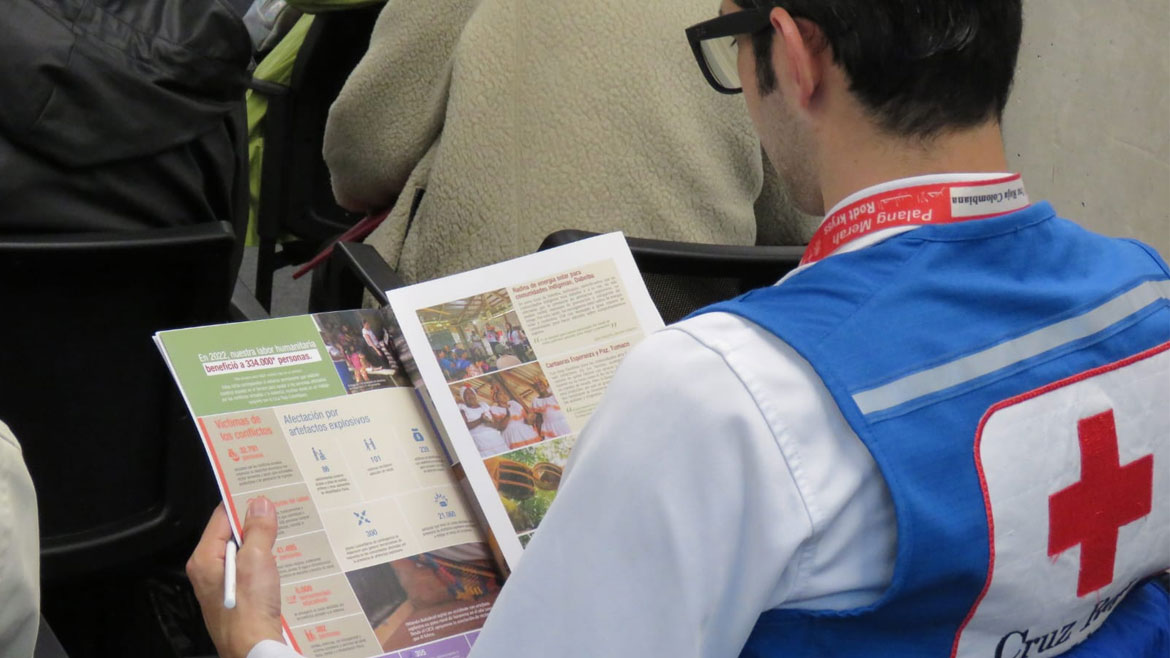Armed conflict in Colombia forcibly displaced more than 180,000 people last year, according to the International Committee of the Red Cross (ICRC).
The ICRC’s annual report on Colombia said that the humanitarian situation in the country deteriorated for the fifth consecutive year in 2022.
Forced displacement and confinement
According to the annual statistics published by the ICRC, forced displacement in Colombia would have risen levels not seen since 2015 when more than 233,000 people were displaced.
Forced displacement since 1985
More than 40,000 of the victims of forced displacement were from the southwestern Nariño province where multiple illegal armed groups are vying for control over the production of cocaine and drug trafficking routes.
Forced displacement also surged in the northeastern Arauca province where a turf war broke out between guerrillas of the ELN and dissidents of the now-defunct guerrilla group FARC last year.
Armed conflicts and violence by illegal armed groups additionally confined 39 thousand people, mainly in Colombia’s Pacific region in the west.
Guerrilla violence in northeast Colombia persists despite ceasefire
Colombia’s seven armed conflicts
The turf wars in Arauca and the Pacific region seven armed conflicts that are waging in Colombia, according to the ICRC.
Groups fighting the State
- ELN (national)
- AGC (national)
- Southeastern Bloc (national)
Fighting between illegal armed groups
- AGC – ELN (national)
- Southeastern Bloc – Segunda Marquetalia (national)
- Southeastern Bloc – ELN (Arauca)
- Southeastern Bloc – Border Commandos (Putumayo)
The armed conflict between the “Border Commandos” drug trafficking organization and the Southeastern Bloc in the southern Putumayo province may have become part of the latter’s conflict with a rival FARC dissident group called the “Segunda Marquetalia.”
The rise of the “Border Commandos” in southern Colombia
In 2022, our field teams documented 400 alleged violations of international humanitarian law and other humanitarian norms, of which more than half involved killings, threats, sexual violence, the indiscriminate use of explosive devices, [forced] recruitment, the use and participation of children and adolescents in hostilities, arbitrary detentions, cruel, inhuman or degrading treatment, among other serious abuses.
The multiple armed conflicts contributed to an apparent increase in the use of landmines that killed 56 and maimed 459 people.
The ICRC additionally said that it also received 348 forced disappearance claims of which 209 allegedly happened last year.
According to Colombia’s Unit for the Search of Disappeared, more than 126,000 people were allegedly forcibly disappeared during the country’s armed conflict.
The ICRC said that last year’s missing person reports “prove strongly that this phenomenon in Colombia is not a thing of the past.”
The humanitarian organization’s concerns about the deteriorating situation in Colombia comes during a peace process that was agreed between the FARC and former President Juan Manuel Santos in 2016.
The government of President Gustavo Petro has been trying to double down on efforts to consolidate peace since taking office in August last year.


